16 Jun
For me, the most pleasurable part of an art exhibition is listening to an artist talk about his work. You’re sure to find some artists at openings. Earlier this week, I met a few of the 13 Coptic artists exhibiting at the University of Toronto. You will have an opportunity to question three of them this Saturday at 1pm. They will be describing the making of mosaic art, and the techniques and spirituality of Coptic religious art.
While these artists are all members of the Coptic Orthodox Church, their work covers a wide range of styles and subjects. Their church, as you may know, dates from the first century. It was started in Egypt by St. Mark, the Apostle. Moslem extremists have recently bombed several of its buildings in Egypt and killed some of its members. I found no allusions to the persecutions in this collection.
Half of the artists were born in Egypt, the rest in Canada. Most have lived for decades in southern Ontario. The mosaic works of Akram and Fadia Gabra range from a Marilyn Monroe to a stunning red quilt, to a reproduction of a 6th century Greek icon of Jesus. This couple has been working together for 30 years. They currently teach courses on mosaic portrait art in Ontario schools. With Monroe, they want to show Canadian students what mosaics can do.
Seham Guirgis was the only one exhibiting traditional Coptic art of the kind found in Coptic churches. She has been in Canada ten years, after studying Coptic art in Egypt. She meticulously copies these ancient symbols and sells them also to worshippers in Canada for their homes.
Ms. Guirgis and the Gabras will be at the Art Centre on Saturday.
Bassem Abdelmalak is an Egyptian-born artist who arrived in Canada when he was nine. His paintings are powerful modern portraits with elements of iconographic style. His faces have eyes that follow the viewer. Because icons are traditionally painted on wood, he makes his canvases look they are also painted on well-grained wood. He, too, paints traditional icons for a living and he has works in churches in Toronto and London. Although he studied at the Ontario College of Art for four years, he learned iconography by himself.
23-year old Andre Guindi paints in an almost-comic book style. His “Nuclear Ambition” shows a shopping cart full of guns, bombs and missiles pulled by a camel in a desert. The driver is an android. Nuclear Ambition depicts the world after mankind has destroyed it.
There are a few fine line drawings by Ghattas Girgis Ghattas of scenes in Egypt and Algonquin Park. They include one of his 92-year old grandmother the week before she died. Asked about the Canadian and Egyptian influences in his works, he said he paints only what is “inside of me… The country has no influence.”
I highly recommend this very rich exhibition which continues until June 25. It is open noon to 5pm on Tuesdays to Fridays, and noon to 4pm on Saturdays. The Art Centre is just west of Hart House in a relatively new addition to University College. The sign outside says 11 Hart House Circle.
Please let me know if you like it. It is sponsored by St. Mark’s Coptic Museum.

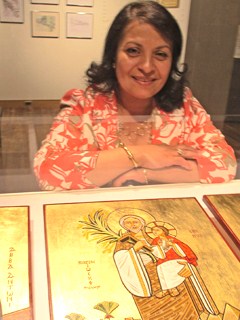
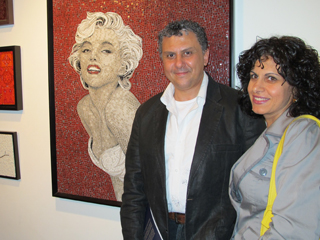
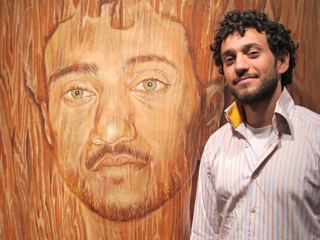
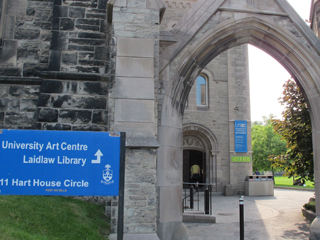
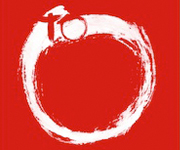
Thank you for giving such a great overview of the Hidden Treasures. This must not have been an easy task by mere fact of the diversity of the exhibition both in style and subject matter. May I take the liberty of adding some of the more subtle “political” messages of the works and their creators. I hope this will further encourage your viewers to visit this first exhibition of Canadian-Coptic visual artists :
n You were able to capture André Guindi’s message of “Nuclear Ambition” and his two other works.
n M. Fathalla’s book multiple titled “Commentary” is a commentary on our western consumer society in comparison to the simplicity, sameness and equality of Cuban life.
n M. El-Gebaly’s visions and his abstract art focuses on art as a “tool” for peace building.
n S. Mekhail conceptual art represents large women from the gaze of women and challenges our stereotypes of what is “beautiful.”
n S. Saad’s three works challenge the dangers of food we normally eat on the labels of lunch bags; represents former president Mubarak as “Modern Day Pharaoh” with a burger king crown on a post card; and the posters of “Ten Most Powerful Women” (five ancient and five modern) analyses their portraits in the same way historical coinage is analyzed by art historians and numismatists.
May I also add that the artist Ghattas asked me to make this correction: the portrait was of his mother and not grandmother.
Thank you again for the wonderful reportage.
Helene Moussa, Volunteer Curator, St. Mark’s Coptic Museum. E-mail: stmarkmuseum@yahoo.com . http://www.copticmuseum-canada.org .
good bassem
Many thanks for your comment but what does “good bassem” mean?